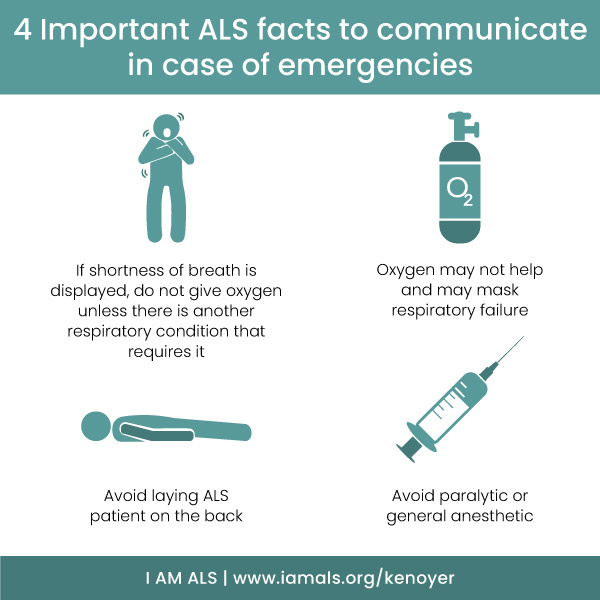

Medical IDs for ALS (Amyotrophic Lateral Sclerosis)
ALS refers to Amyotrophic Lateral Sclerosis and is often called Lou Gehrig's disease, after the baseball player who was diagnosed with it in 1939. ALS is a neurodegenerative disease that causes the brain to stop talking to the muscles, causing increased paralysis over time.
Ultimately, ALS patients become prisoners within their own bodies: unable to eat, talk, breathe or move on their own. Their mind, however, often remains sharp so they are aware of what’s happening to them. ALS will affect 1 in 300 people in our lifetimes, and patients usually have no more than 2-5 years to live following diagnosis.
I AM ALS encourages people with ALS to wear a medical identification bracelet or necklace. Many emergency personnel may not be familiar with the unique needs of caring for someone with ALS so a medical ID can be helpful in telling them the highest-level do's and don'ts.
Complications of ALS

The following complications are associated with Amyotrophic Lateral Sclerosis (ALS) as the disease progresses:
- Breathing difficulties
- Loss of speech
- Malnutrition and dehydration
- Difficulty with memory, communication, and/or thinking
Source: Mayo Clinic
ALS Medical ID in Emergencies
Get prepared for emergency medical situations. A medical ID bracelet or necklace for ALS can help alert medical professionals like responders, doctors, and nurses about the presence of ALS. Wearing a medical ID can help ensure that a patient will receive the safe and appropriate care that they need.


Essential ALS information in case of emergency:
SHORTNESS OF BREATH: If shortness of breath is displayed, do not give oxygen unless there is another respiratory condition that requires it. There may be a need for noninvasive positive pressure ventilation to expel CO2.
OXYGEN MAY NOT HELP AND MAY MASK RESPIRATORY FAILURE: An ALS patient’s lungs are healthy, but muscles including the diaphragm are weak. If the patient is using a BPAP at home, the settings should be the same as those. IF NOT, a BPAP with a pressure of 12/6, backup rate of 10 with titration as needed may help.
AVOID LAYING ALS PATIENT ON THEIR BACK: This may present a difficulty because of the possibility of CO2 retention due to diaphragmatic weakness and aspiration due to poor ability to protect their airway. It may be possible if using a BPAP or non-invasive mechanical ventilation.
AVOID: Paralytic or general anesthetics, narcotics or muscle relaxants unless absolutely necessary. If used, the ability to rapidly assist ventilation non-invasively or invasively should be available.
Disclaimer: The given examples may not be applicable to all ALS patients based on their individual diagnosis. Ask for your doctor's advice on critical information to communicate during an emergency.
What to Engrave on ALS Medical ID Bracelet or Necklace


Engraved information on an ALS medical ID can make it easier for first responders to assess a patient's health situation. Without a medical ID, signs and symptoms of ALS can be misconstrued and lead to misdiagnosis.
Engraving Information Should Include:
- Wearer’s name
- I have ALS
- Don’t lay me on my back
- Allergies or other medical conditions that may or may not be related to ALS
- In case of emergency contacts
ALS is a complicated disease and as such, all health information may not always fit on a medical ID tag or plate. An expandable emergency wallet card can be utilized to hold additional details such as prescribed medications or special care instructions.
"Some health professionals and emergency personnel may not be familiar with the unique needs of a person with ALS. As such, it is important to know what information is essential to share to ensure you or your loved one receives appropriate care in an emergency medical situation." - I AM ALS
About I AM ALS




 - UK
- UK  - Canada
- Canada  - Australia
- Australia 